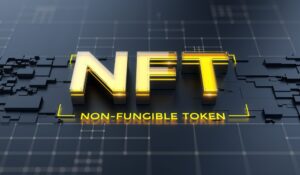The NFT industry has been experiencing a new wave of innovation as the integration of Bitcoin into the space continues to evolve. One of the latest developments in this regard is the emergence of ordinals, a new type of NFT inscribed in Satoshis, the smallest unit of Bitcoin.
Recently, the number of inscriptions using ordinals has surged past the 95,000 mark and reached a significant milestone of 100,000. Users have actively participated in this new trend by sharing images and other NFT content on the network.
Like traditional NFTs, ordinals are digital assets that represent unique items or assets, such as artwork, collectibles, or music. However, unlike traditional NFTs, ordinals are inscribed in Satoshis, which means that they are based on the value of Bitcoin.
What Are Ordinals
Integrating NFTs into the Bitcoin network has been a long-standing goal for developers since early 2014. Over the years, several projects, such as the Rare Pepe NFT collection and Stacks, have joined the network to bring NFTs to the Bitcoin game.
The process of inscribing NFTs, also known as ordinals, into the Bitcoin blockchain was introduced in 2017 as an upgrade to the network. This process involves inscribing information into the witness of the Bitcoin transaction, which is a part of the Bitcoin protocol.
According to Alex Miller, an executive at Hiro, the developers of ordinals are geniuses. The first step in creating ordinals is for users to download Bitcoin’s core software and sync it to the blockchain. Once that is done, the next move is to create an ordinals wallet and send some satoshis, the smallest unit of Bitcoin, to it.
Integrating NFTs into the Bitcoin network is an exciting development for the NFT space. It allows the creation and trading of unique digital assets based on Bitcoin’s value.
What Does This Mean For The Digital Assets Space
The integration of NFTs into the Bitcoin network through the use of ordinals is a significant development in the digital asset space. As more developers explore this technology, it could disrupt the competition in the NFT market.
While Ethereum has been the dominant blockchain for NFTs, integrating NFTs into the Bitcoin network provides an alternative for creators and collectors. Using ordinals allows for creating and trading unique digital assets based on the value of Bitcoin, which has a larger market cap and is more widely adopted than other cryptocurrencies.
This development could lead to increased competition between Ethereum and Bitcoin for dominance in the NFT market. As Bitcoin is the most well-known cryptocurrency with a larger user base, integrating NFTs into its network could attract more mainstream users and investors to the NFT space.
Disclaimer: NFTs and Cryptocurrencies are highly volatile, conduct your own research before making any investment decisions. Some of the posts on this website are guest posts or paid posts that are not written by our authors (namely Business Voices content) and the views expressed in these types of posts do not reflect the views of this website. Please read our full disclaimer here.




